Here’s why we reduced the size of our lawn and changed our lawn care practices.
Toxic chemicals
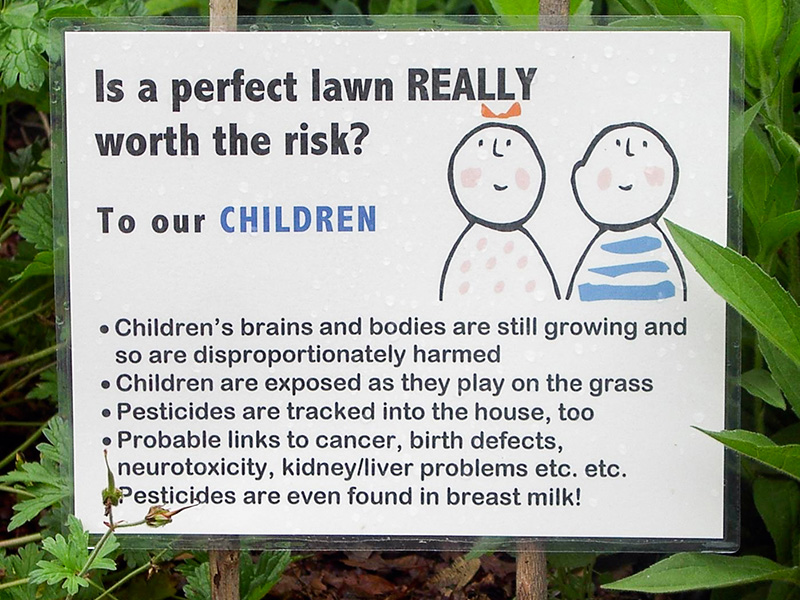
The first ten or fifteen years in our home, we applied the usual “weed ‘n’ feed” style treatments ourselves, and even, for a time, contracted with one of those ubiquitous lawn care companies to apply their toxic brew.
And we had kids and a dog at the time! I shudder at the thought!
(And coincidence or not, our dog did die from canine cancer.)
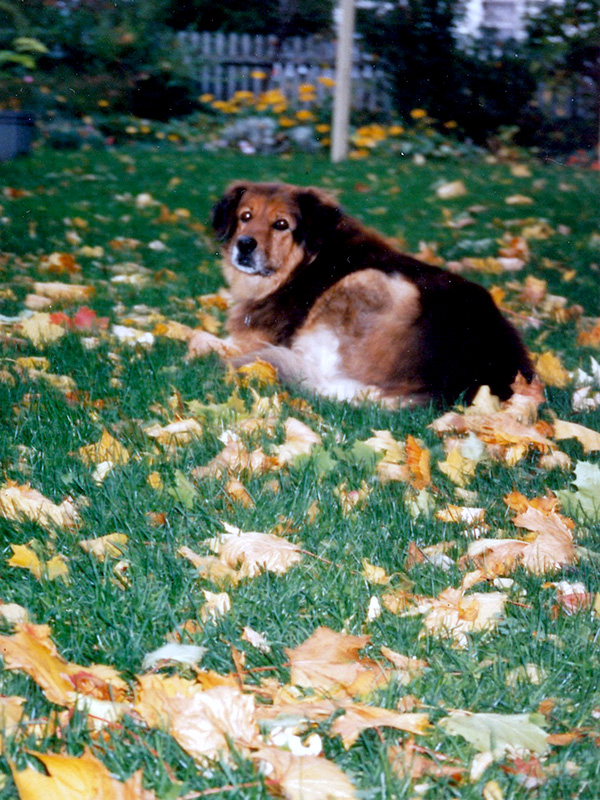
Fertilizers
In addition to pesticides and herbicides, we had also applied chemical fertilizers (the “feed” part of those “weed ‘n’ feed” products). This sounds so benign — what harm can it do to just help plants grow?
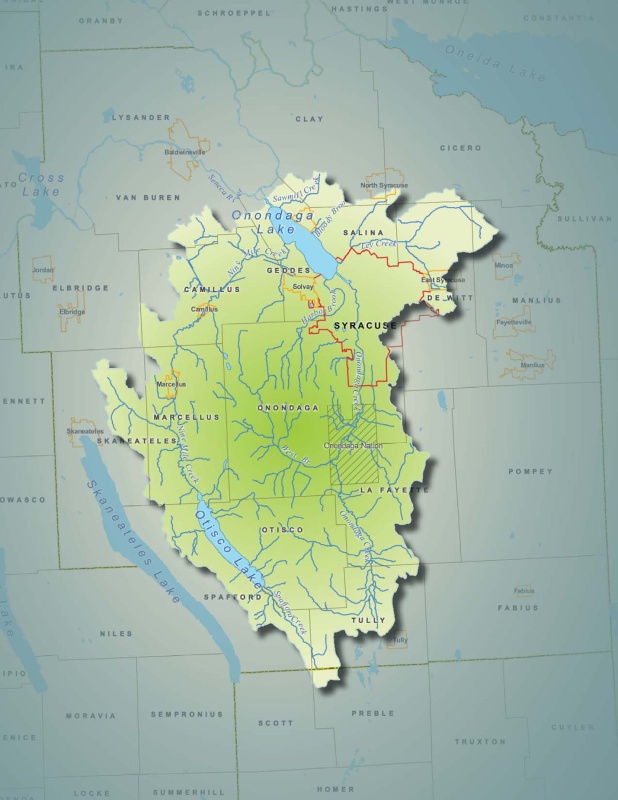
We’re in the Onondaga Lake watershed, so when we were fertilizing our plants, the excess fertilizer was going down the sewers into our local streams and ultimately into Onondaga Lake.
The extra phosphorus from fertilizers causes some of our lake’s many problems.
Another local lake, Skaneateles Lake, has been struggling with HABs (Harmful Algal Blooms) for the last few years. These are dangerous! And according to the NYS DEC, one cause is “Excess fertilizer nutrients (nitrogen, phosphorus) from agricultural lands and residential areas” — in other words, by fertilizing lawns. NOTE: Skaneateles Lake supplies drinking water for the city of Syracuse!
Air and global warming pollution
Even with our vegetable garden and some flower beds, we still had quite a bit of lawn … and therefore quite a bit of lawn mowing with a gas lawnmower, which is more polluting than are cars.
(And from own current perspective, this was too dangerous in many ways for a child to be participating!)
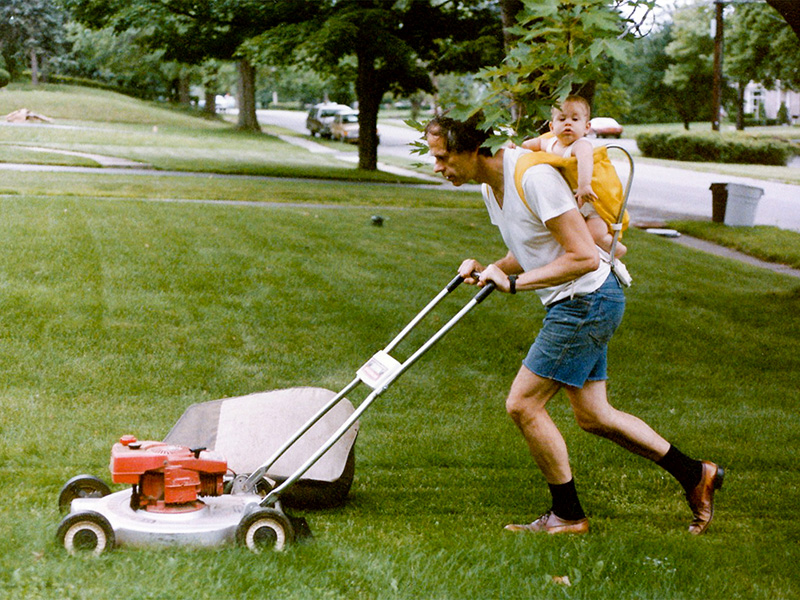
Lawn care creates more CO2 than it absorbs, when all the inputs/outputs are considered, and produces less oxygen than would larger plants that could otherwise be growing in its place.
I’ve seen articles that tout the benefits of lawns producing enough oxygen for a family of four … but this pro-lawn propaganda fails to take look at the whole lawn care system. According to the research in the book Redesigning the American Lawn, these climate-warming downsides include the CO2 added by decomposition of lawn waste, fossil-fueled machinery, fossil energy used to pump water (at the community’s water plant), and fossil energy used in the production of fertilizers and pesticides. These more than make up for the relatively smaller amount of oxygen added by the turf grass.
Nor do these oxygen calculations consider what could be there instead. Lawn may be better than asphalt or concrete, but how could it be better than the same amount of space growing herbaceous plants, shrubs, and especially long-lived native canopy trees?
Water use
Even when we had a larger, “normal” lawn, we didn’t often water it. If it browned up a bit, so be it. Browning never killed it. Brown is what you get when you try to grow something — like non-native turf grass — that doesn’t belong here.
According to the EPA, lawn care and landscaping accounts for more than 30% of all water use in the U.S. I’ve read that it’s up to 60% in drier parts of the country. Many of these areas are depleting their aquifers, using glacial water to maintain lawns. Depleted aquifers is not the legacy I want to leave future generations.
And even though we in Central New York have abundant water resources, it takes a lot of energy to pump water up to the reservoirs, and it takes our sewage treatment plants an enormous amount of energy to clean water.
Here in the U.S., we’re using potable water to water lawns! How can this make sense?
Loss of habitat
Once I became involved in the National Wildlife Federation’s Backyard Wildlife Habitat program and become more aware of the need for habitat, the paucity of habitat in lawn-dominated landscapes seemed pretty obvious. Lawns are biological deserts.
And as The Humane Gardener points out, “Mowing is one of the worst things you can do for fireflies … Right up there on the bad-actor list, along with mowers, are the products used to maintain artificially green and lifeless landscapes.”
Human costs
The human costs are immense, but seem so normal that few people even realize they exist. Beside the time and money devoted to lawns, other significant costs are noise pollution and a disconnect with nature.
Noise pollution
This is one of the most obvious costs and one that is under appreciated.
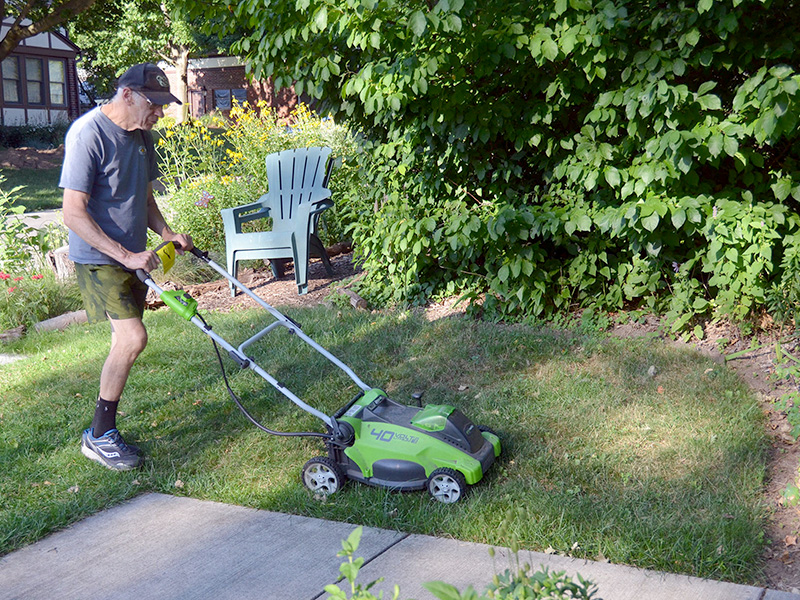
People in the suburbs seem to accept as normal the enormous amount of noise lawnmowers, weed whackers, and leafblowers create.
Our electric mower creates very little noise.
People in the suburbs seem to accept as normal the enormous amount of noise lawnmowers, weed whackers, and leafblowers create.
Maybe in our machine-dominated society all these noises are taken for granted, but once I started noticing it, it’s all I hear, especially on the weekends. As soon as one device stops, another one or two begins. Is this really what people wanted when they left cities long ago?
It’s easy to reduce leafblower noise — reduce the size of the lawn that needs to be raked, and then use an old-fashioned rake to get the leaves off the lawn.
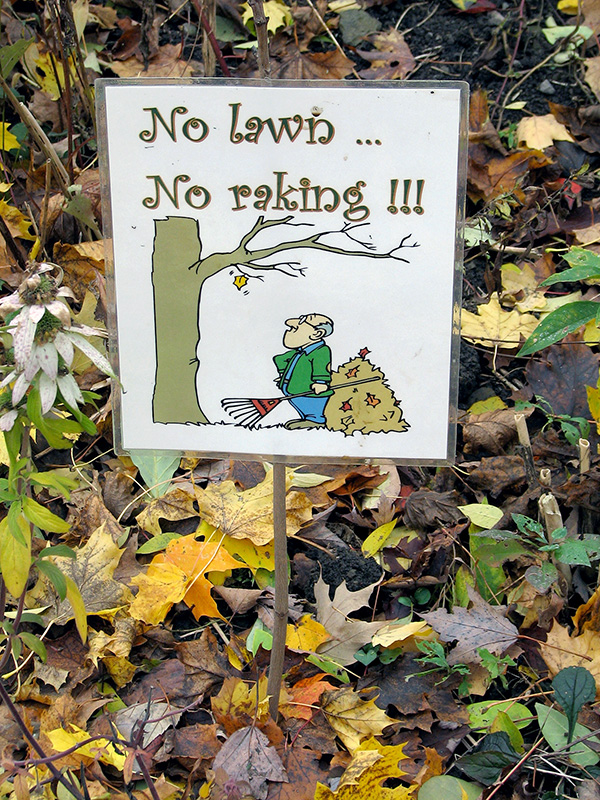
As I’ve become more in tune with the birds singing in our yard, toads singing their mating calls, and insects making all sorts of sounds, the human-caused noise pollution becomes ever more unpleasant. I’m not sure people appreciate silence anymore or even know what it is.
Disconnect with nature
A huge human cost is the loss of our connection to the natural world. As Edward O. Wilson’s concept of biophilia indicates, humans are meant to be connected to nature.
We truly don’t know what we’re missing when we live in lawn-dominated landscapes.
Just as lawns are biological deserts for wildlife, they’re psychological deserts for people.
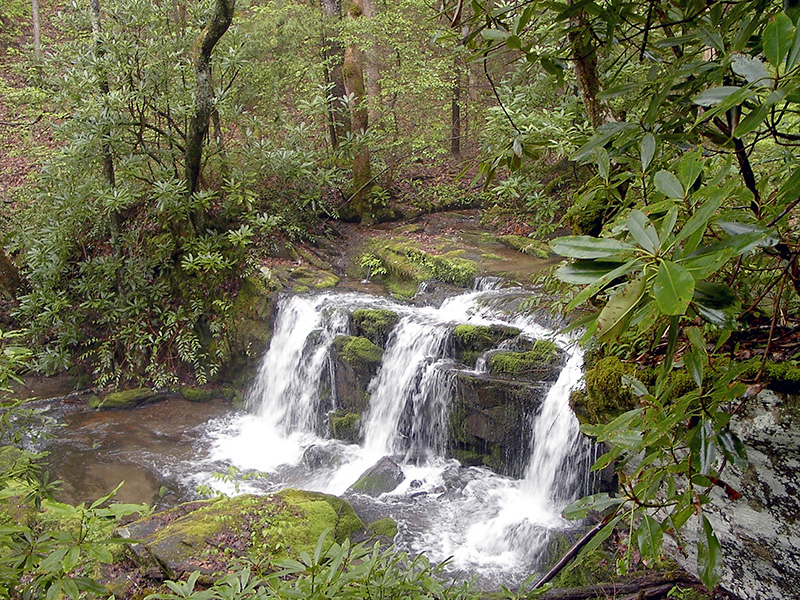
A deeper connection to the natural world will serve us well as we negotiate the difficult years ahead, when we come to a time when we can no longer hide the unsustainability of our current lifestyle.
As many designers, architects, and engineers are discovering, regenerating nature can point the way to a more sustainable, more satisfying life for people and for all life on earth.
Lawn isn’t it.
Resources
- OurHabitatGarden.org (this website)
- Here are our lawn signs and other information about pesticides in our habitat garden.
- Leave Leaves Alone!:
- a NYS organization founded by Master Gardeners and others – includes info on a proposed gas leaf blower ban for NYS
- Beyond Pesticides:
- EWG (Environmental Working Group):
- Glyphosate – includes a 3-minute video
- Restoration Science Center at SUNY ESF:
- Smithsonian Migratory Bird Center:
- The New Yorker:
- Blowback: The great suburban leaf war
- Washington Post:
- Quiet Communities:
- Quiet outdoors – Transitioning communities & industries to clean, quiet outdoor power equipment
- Outside Online:
- Noise Free America:
- Lawn and garden equipment, including leaf blowers
- Audubon Magazine:
- NY Times:
Reflections
In our efforts to make it greener, to make it all grass, to keep it closely mowed, and to make it a constant companion of suburban development, we are unnecessarily contributing to some of the most severe environmental problems facing the world today.
F. Herbert Bormann et. al., Redesigning the American Lawn
Abolish the White House Lawn. The democratic symbolism of the lawn may be appealing, but it carries an absurd and, today, unsupportable environmental price tag. In our quest for the perfect lawn, we waste vast quantities of water and energy, human as well as petrochemical. (The total annual amount of time spent mowing lawns in America comes to 30 hours for every man, woman, and child.) Acre for acre, the American lawn receives four times as much chemical pesticide as any U.S. farmland … But the deeper problem with the American lawn, and the reason I believe the White House lawn must go, is less chemical than metaphysical. The lawn is a symbol of everything that’s wrong with our relationship to the land. Lawns require pampering because we ask them to thrive where they do not belong. Turfgrasses are not native to America, yet we have insisted on spreading them from the Chesapeake watershed to the deserts of California without the slightest regard for local geography. Imposed upon the land with the help of our technology, lawns encourage us in the dangerous belief that we can always bend nature to our will. They may bespeak democratic sentiments toward our neighbors, but with respect to nature the politics of lawns are totalitarian.
~ Michael Pollan, The New York Times; 1991 Op Ed Classic
It’s time we move out of 19th century thinking!
Since the introduction of the lawn-mowers, the keeping of the lawn has been so simplified that no suburban residence is complete without one, and there is now no more excuse for tall grass “going to hay” in the door yard than there would be for cobwebs taking possession of the rooms inside the dwelling. We occasionally see some parsimonious individual, even now, who remembers that in his grandfather’s day, grass was allowed to grow for the food of the “critters,” and he leaves it for food for his “critters” still … We have two or three notable examples of this kind in my immediate neighborhood, but is is gratifying to know that such neighbors are not numerous, for the example of the majority will soon shame them into decency.
~ Paul Henderson, Gardening for Pleasure, **1883**
